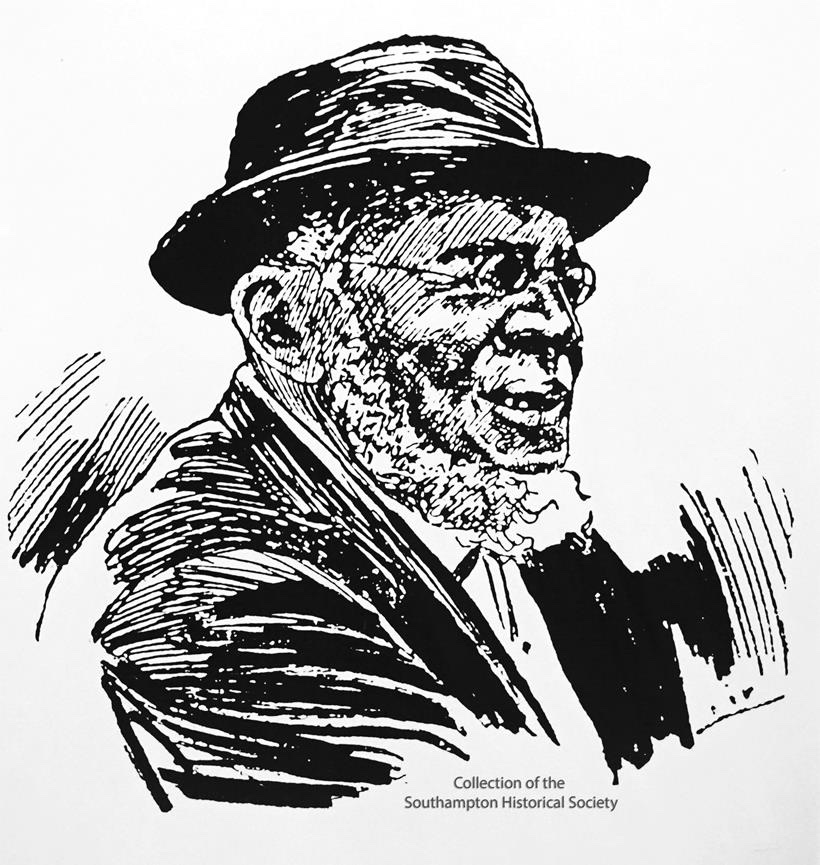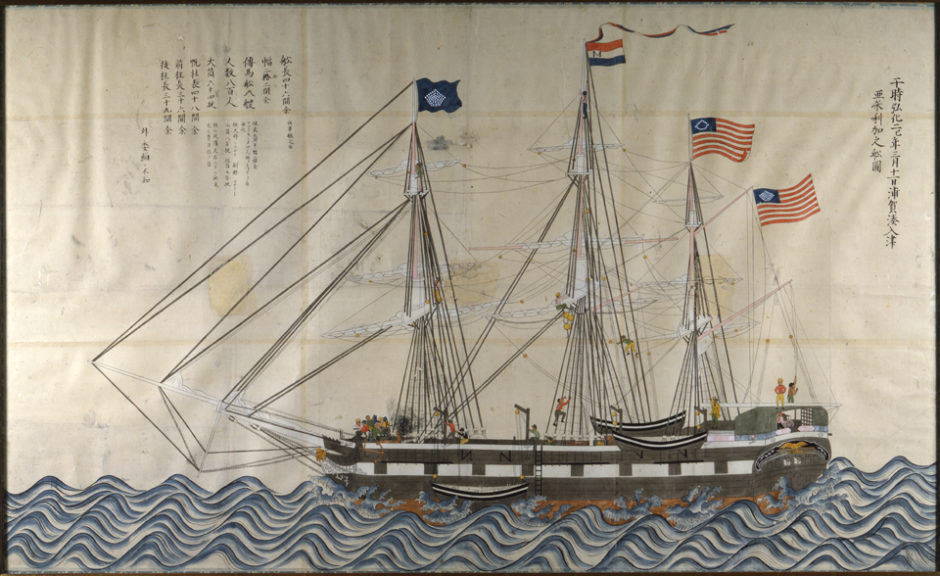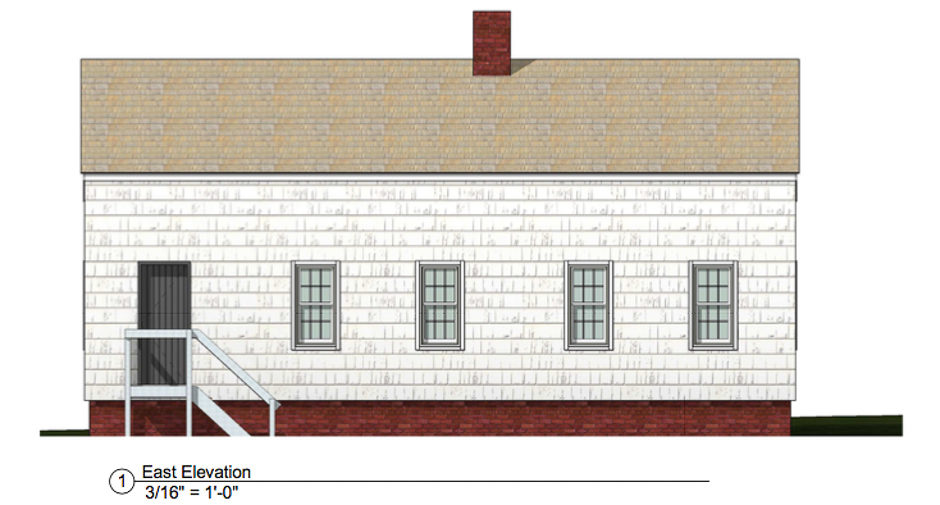
Pyrrhus Concer of Southampton, 1814-1897. Courtesy of the Southampton Historical Society.
——————-
Pyrrhus Concer
Whaler, Entrepreneur & Philanthropist
~~~~~~~~~~~~~~~~~~~~~~~~~~~~~~~~~~
Born a slave in Southampton in 1814, Pyrrhus Concer, as a free man, went whaling at the age of 18. He sailed as a common seaman during his first voyages and then was promoted to boatsteerer, a position of great importance on a whaling ship. The boatsteerer was responsible for guiding the whaleboat toward the targeted whale and for throwing the first harpoon, and then for holding the boat close to the whale while other shipmates killed the whale.
Concer sailed on the famous voyage of the Manhattan in 1848, captained by Mercator Cooper of Southampton, when it picked up several shipwrecked Japanese fishermen in the Pacific Ocean. The Manhattan took those fishermen from Japan home and thus became the first American ship to enter Tokyo Harbor, which at the time was closed to foreign ships. The Japanese were fascinated by Concer, the first person of African heritage they had ever seen, and treated him with curiosity and respect. After retiring from whaling, Concer headed for the goldfields of California for a short time before returning to Southampton, where he operated a ferry service on Lake Agawam.
Concer, who died at the age of 84 in his home at 51 Pond Lane in Southampton Village, left a legacy to the Presbyterian Church of Southampton and a fond memory. His obituary described him as “one of the most respected residents of the village.”
————————————–
The stone that marks the Southampton grave of Pyrrhus Concer bears this inscription:
Though born a slave
he possessed virtues
without which kings
are but slaves.
————————-
————— Voyage of the Whaleship Manhattan —————

Voyage of the Whaleship Manhattan: [Strong] currents drove the Manhattan more than 100 miles south of Yedo (Tokyo). Finally, on April 16, she was able to return north and anchor on the east side of the bay.
Captain Mercator Cooper had given his permission for the ship to proceed to Yedo, but there was no wind to fill the sails.
Mr. Jagger wrote in the ship’s log (April, 1845), “Hundreds of Japanese boats, with about 15 men to each boat, formed a long line four abreast and towed the ship into the harbor at a remarkable speed. These boats were not propelled by rowing or paddling, but were sculled along by a single oar out of the stern and manipulated by several men to each oar. The ship was taken up into a bay just below Jedo (Yedo) and moored behind a point of land where the foreigners could not see the city.
“They formed their boats round the ship with a guard of about three thousand men. They took all our arms out to keep till we left. There were several of the nobility came on board to see the ship. They appeared friendly.”
Mr. Jagger wrote that Captain Cooper was informed through an interpreter that neither he nor any of his men could leave the ship for any reason: “what would happen if anyone did was eloquently indicated by drawing a naked sword across the throat.”
For four days the Manhattan lay at anchor in Yedo Harbor. It was visited by a variety of Japanese who were intrigued by the Americans’ woolen clothing, and, according to Mr. Jagger, especially by the [African American] Pyrrhus Concer and [Shinnecock Native American] Gad Williams of Southampton.
Before the Manhattan set sail from Yedo, the Japanese government sent to the ship a quantity of supplies, including water, 20 sacks each of rice and wheat, flour, sweet potatoes, “50 fowl,” cords of wood, two pounds of tea, and radishes, more than a foot in length, according to Mr. Jagger. The Shogun also sent a message cautioning, “Don’t come again.”
When it came time to leave, “A long line of about 300 boats…just as when the harbor was entered” towed the Manhattan about 20 miles out to sea, from there to sail north to cruise during the summer in waters near Kamchatka in search of whales. According to the log, the search was successful.
The following year the ship reached its Amsterdam destination where the whalebone and oil were sold. After a voyage of two years, eleven months, and five days, Captain and crew returned home; the last entry in the log notes that they “made Block Island” at 1 PM on October 14, 1846.
— Copy courtesy of the Southampton History Museum
_________________________________________
RESTORATION / CONSTRUCTION PLANS
~~~~~~~~~~~~~~~~~~~~~~~~~~~~~

Restoration / Re-Construction of Pyrrhus Concer Homestead Across from Lake Agawam, Southampton
————————-
Plaque
Site of Pyrrhus Concer (1814 – 1897) Homestead. Born Indentured; Sold Into Slavery; Gained Freedom; Legendary Whaler; Prominent Resident of Southampton; Devout Christian; Philanthropist.
~~~~~~~~~~~~~~~~~~~~~~~~~~~~~~~~~~~~~~



———-

————————————————
Courtesy of Chaleff & Rogers
www.chaleffandrogers.com
_________________________________________________________________________
